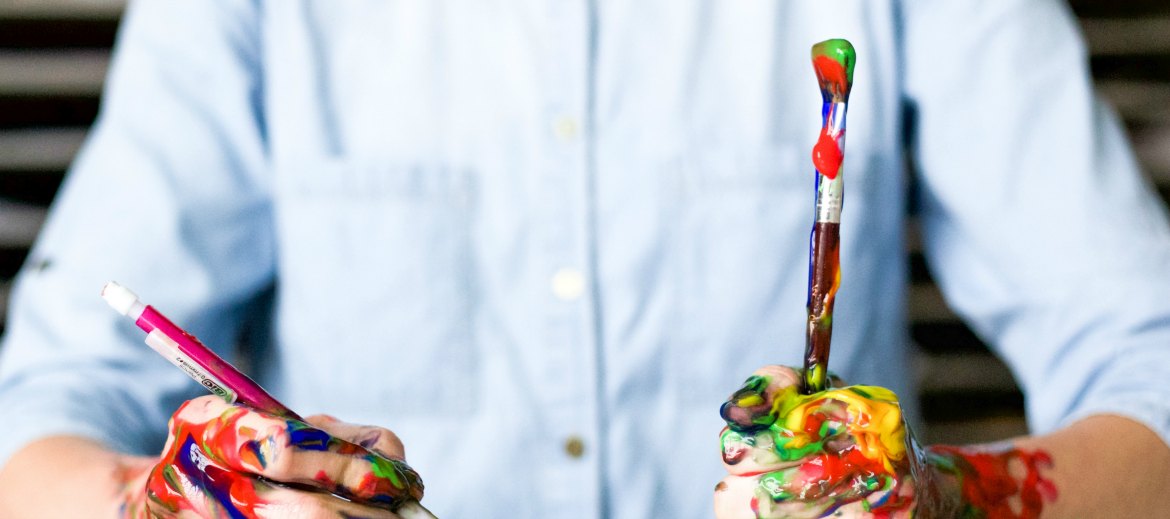Science may be the basis of technological innovation, but art is what makes it appealing to the masses.
Amid companies’ focus on recruiting talent with hard technical skills in areas such as computer science and engineering is a renewed push for the arts. The development is most reflected in an effort by the Rhode Island School of Design to include “art” in the STEM acronym, widely used to describe education’s focus on science, technology, engineering and mathematics.
The University of Iowa’s College of Engineering recently jumped on the STEAM bandwagon as well. It now requires engineering students to take at least three credit hours of creative arts courses. The “Be Creative” requirement is recognition that these students will be better engineers if they are more creative artistically, according to Alec Scranton, the College of Engineering’s dean.
Scranton said that although engineering is inherently a creative field, today’s engineers need to have a broad understanding of the role art plays in design. “This type of broader exposure to the arts just helps develop that more rounded engineer that will be more prepared for success upon graduation,” he said.
It also helps the products that engineers design become more successful. Think of the success Apple has had with its products. A big reason Apple has out-performed its competitors isn’t that its products are technically better — although some certainty are — but that they are built with an intense focus on design.
Where to Start
Including the arts in business can start with something as simple as having an event. A 2012 Arts & Business paper, “The Value of Arts-Based Initiatives: How to combat the recession for Business,” showed that Arts-Based Initiatives, or ABIs, are a way that “businesses can generate value from existing relationships with the arts, as well as an opportunity to establish new relationships, by exploiting the knowledge and skills within the sector for their own competitive advantage.” ABIs, the paper said, are interventions to the organization using at least one art form to have employees experience art and embed it as a business asset. These are often experiential learning events that encourage people to be innovative and take risks.
Some companies have found unique ways to inject art in their cultures to positively influence performance. Scottish Widows, an investment firm, started its Arts@Work program in 2007, which brought together workers from two separate locations through gallery tours, art workshops and employee-produced art. Of those who participated, 38 percent said the program increased their productivity and 43 percent experienced business benefits from the creative work.
“ABIs target the businesses’ infrastructure and personnel as well as demonstrate and develop these higher-value sets” of employee satisfaction, such as engagement, meaning of work and flexibility, according to the Arts & Business paper. And when employees are more satisfied and engaged at work, their productivity rises, leading to better retention and fewer sick days reported, the paper said.
Bolstering Team Performance
But business leaders can take this effort further. Meshing art-focused talent with different fields can also boost team performance by making them more agile, according to Denis Lacasse, executive vice president of Momentum Design Lab, a user-centered website and software design agency in San Mateo, California.
Lacasse previously worked as an executive producer at Zynga, a video game developer, and when faced with a shortened timeline for a game’s development, he said getting the project accomplished required agility. So the leadership team decided to set up a “pod” structure that included workers from different disciplines and backgrounds — artists, game designers, engineers, etc. — in each of the four pods, but they shared a common link of being passionate gamers focused on the end goal.
“I think creating that environment and making them autonomous and responsible for the outcome of that specific area really allowed them to take ownership, feel like they really had an ownership and a stake in the outcome and that they were in control,” Lacasse said.
This is important because teams with more diverse backgrounds tend to make more productive decisions, Lacasse said. “Having too much of similar thought is not going to push you in the right direction, so underlining that you have to have these different points of view is important.”
The game ended up taking only four and a half months to finish, Lacasse said, whereas the company’s other games could take between six and 12 months to complete. While he said the success of the game and quick turnaround couldn’t be solely attributed to making thought-diverse teams autonomous, “I think empowering our people and having that diversity definitely was a big part.”
Lauren Dixon is an associate editor at Talent Economy.
















